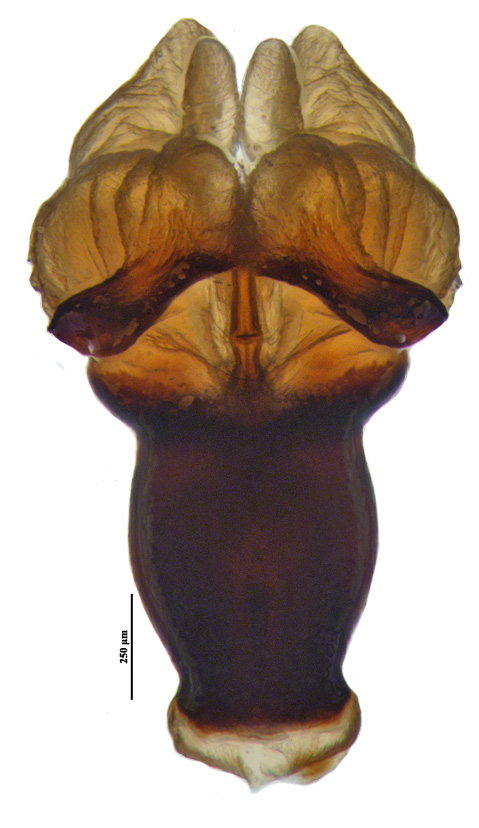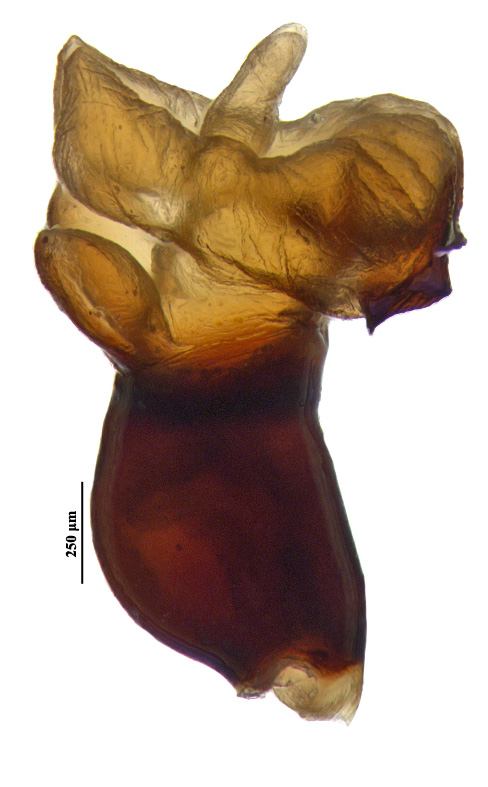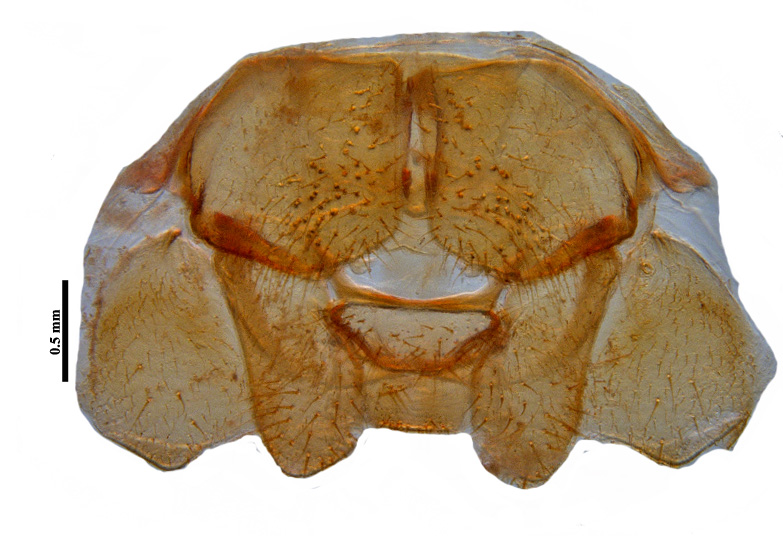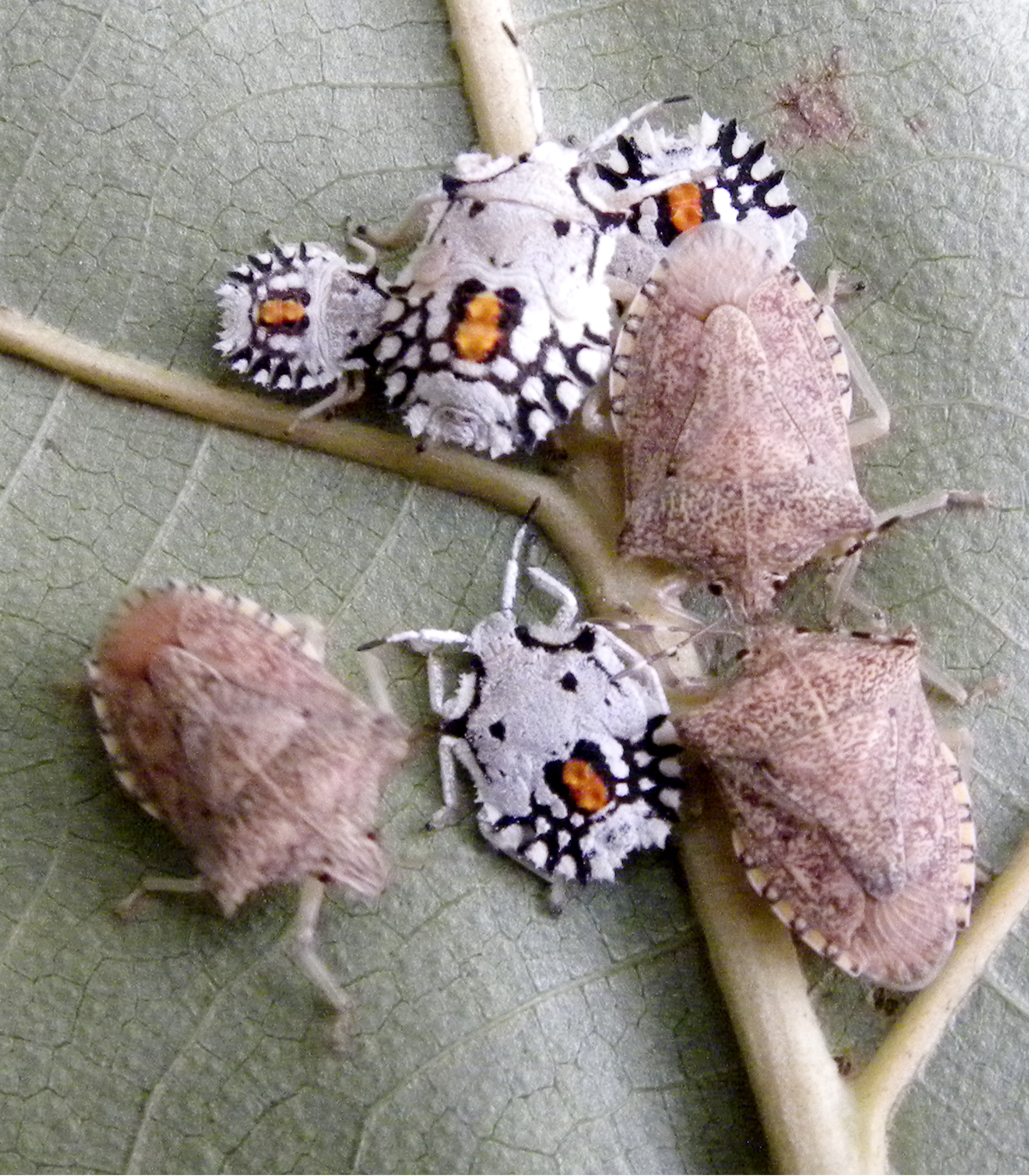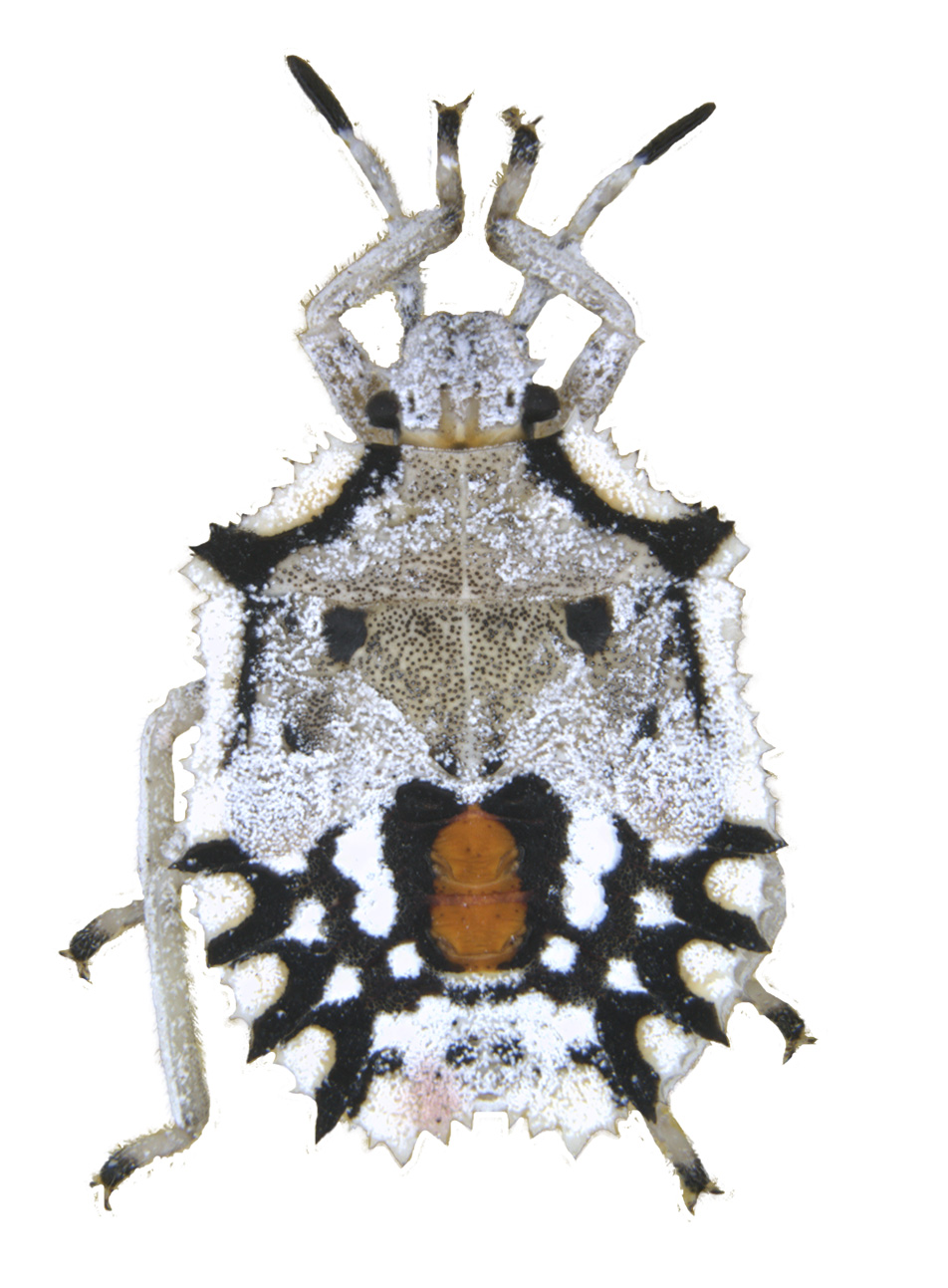Degonetus serratus (Distant, 1887)
Synonyms
Nil
Taxonomic position
Hemiptera: Heteroptera: Pentatomidae: Pentatominae
Diagnosis
- Head with apex rounded; mandibular plates longer than clypeus; meeting in front of clypeus
- Antennae four segmented
- Anterolateral margins concave towards humeri, serrate or with denticles
- Humeri angulate, moderately spinose, short spinous projection beneath humeral spine.
- Metasternum carinate and moderately developed into hexagonal shape
- External scent efferent system with peritreme reduced
- Legs with femora unarmed, tibiae dorsally with longitudinal groove.
- Connexivum well exposed; basal abdominal sternite with short tubercle
Male genitalia
Ventral rim of genital capsule medially with semiquadrate notch; dorsal rim widely and deeply excavated concave with narrow median emargination; paramere with apex of crown slightly beak-like; phallotheca dark brown, sclerotized with four ear-like lobes distally; aedeagus short, slightly sclerotized, tubular and slightly bent towards dorsal side.
Female genitalia
Valvifers VIII roughly pentagonal with inner lateral margins straight; valvifers IX narrow, transverse and fused to single roughly trapezoidal plate; laterotergite IX, elongate finger-like; laterotergite VIII roughly triangular with caudal margin angulate; spermathecal dilation externally fluted into single dilation; apical receptacle short, orbicular with two finger-like processes.
Biology
Creamy white eggs laid in groups on the under surface of leaves. Five nymphal instars, sometimes congregate both nymphs and adults on the underside of leaves.
Host plants
Sandal (Santalum album L.); Teak (Tectona grandis Linn. f.) (Chatterjee, 1934).
Distribution
Bihar (Azim, 2011); Karnataka (Usman and Puttarudriah, 1955); Fraserpet (Chatterjee, 1934); Kerala (Chatterjee, 1934); Maharashtra (Distant, 1887); Tamil Nadu (Chatterjee, 1934); South Malabar (Chatterjee, 1934).
Comments
Distant (1902) placed this genus under the Division Tropicoraria and later, Azim and Shafee (1984) erected the tribe Degonetini for accommodating Degonetus. This genus is remarkable in having four segmented antennae
Selected References
Azim, M. N. and S. A. Shafee. 1984. Degonetini trib. n. (Heteroptera: Pentatomidae). Current Science, 53(20): 1094-1095.
Chatterjee, N.C. (1934) Entomological investigations on the spike disease of sandal (24). Pentatomidae (Hemipt.). Indian Forest Records, 20, 1–31.
Distant, W.L. (1887) Contributions to knowledge of Oriental Rhynchota. Part I. Fam. Pentatomidae. Transactions of the Entomological Society of London, 3, 341–359.
Distant, W.L. (1902) Rhynchota. Vol. I. Heteroptera. In: Blanford, W.T. (Ed.), The Fauna of British India Including Ceylon and Burma. Taylor and Francis, London, pp. I–XXXVII + 1–438.
Usman, S. & Puttarudriah, M. (1955) A list of the insects of Mysore including mites. Entomology Series Bulletin. 16, i–vi + 1–194. [Department of Agriculture, Government of Mysore state]





